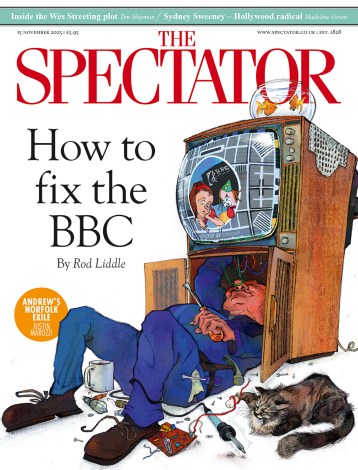It’s the constant dilemma of the pop science author: how to write something flashy enough to grab readers, but solid enough that it won’t be embarrassing in a few years when the science has moved on. Full scientific rigour entails tedious jargon and even more tedious equations, and nobody wants that. But neither should the messy, uncertain world of scientific research be oversimplified. In his lengthy new book, Behave, the Stanford neuroscientist primatologist Robert Sapolsky walks this tightrope as he explains the biology of humanity’s ‘best and worst’ behaviours.
Behave is a crammed compendium of scientific findings, organised in an ingenious way. Beginning with a human behaviour — the pulling of a trigger, say: Sapolsky recounts the science of what happened in the trigger-puller’s brain seconds before, then hours before, then weeks and years before, continuing with what happened in their childhood, in the womb and so on, finishing up with no less than the evolution of behaviour, millennia ago. He then considers what the findings mean for the justice system, for war and peace and for free will.
As we navigate Sapolsky’s reverse chronology, we encounter discussions of which regions of the brain are involved in fear and self-control, which hormones relate to aggression, the context-dependency of genetic effects on behaviour and the evolution of co-operation. If this list seems familiar, it’s because all these topics have been covered before in more focused pop biology books — but Sapolsky does give an admirably complex, up-to-date summary, adding in newer areas such as the study of adolescence and epigenetics. In the end, clearly with that sought-after scientific rigour in mind, he draws a realistic-but-not-exactly-resounding conclusion about human behaviour: ‘it’s complicated.’ But is it complicated enough? Sapolsky is oddly capricious with his scepticism: at some points he is highly critical — the overhyped idea that the brain’s ‘mirror neurons’ are responsible for our ability to empathise receives a well-deserved kicking, for example — but at others he gives a free pass to some truly risible research.
The problem comes when the discussion turns to psychology studies. Sapolsky is a subscriber to the theory that unconscious influences matter a lot to our behaviour: ‘We are constantly being shaped,’ he writes, ‘by seemingly irrelevant stimuli, subliminal information and internal forces we don’t know a thing about.’ This leads him to praise many studies that most of us who do psychology research would rather forget. Take the study from 2008, popular with ‘Broken Windows’ theorists, which found that people were more likely to steal money when there was litter lying around. Sapolsky cites it, but doesn’t mention the stinging scientific criticism that followed, with one response paper decrying its ‘mediocre methods and substandard statistics’.
Another: Sapolsky repeatedly cites a study where brain scans found that the ‘fear centres’ in white people’s brains lit up when they saw a black face, but lit up even more when rap music was also being played in the background. Upon reading this study, I found it had a total of 23 participants, and some extremely borderline results. Another: a 2006 study, one of Sapolsky’s ‘all-time favourites’, uncovered the ‘Macbeth Effect’, where participants who had just read aloud a story about unethical deeds were more likely to pick up some antiseptic wipes as they left the lab (presumably so they could do the whole ‘out, damn spot!’ thing). But a much bigger study by Oxford academics in 2014 failed to find any such effect.
You get the idea. Almost every time I looked up a social-psychology study cited uncritically in Behave, the results crumbled to dust at the slightest scrutiny. Who is at fault, here? Clearly Sapolsky hasn’t kept up with what psychologists are calling the ‘Replication Crisis’ — the dawning realisation that many of our most exciting, newsworthy findings may have been flukes, and can’t be reproduced in independent labs. But psychologists should also shoulder the blame for publishing such meretricious ‘research’ in the first place, letting standards slip in the pursuit of grant money and headlines.
Behave is not a Dawkins-style exercise in elegant prose — with a couple of exceptions, like the frankly weird introduction describing his Hitler-torturing fantasy, Sapolsky adopts an informal, chummy tone. Nor is there a single Pinkeresque argument that binds the book together (like ‘violence has declined through history’ from the similarly long The Better Angels of Our Nature). Nevertheless, there is plenty to enjoy and plenty to learn, as long as you remember to treat the social-psychology research with the distrust it deserves.
All this does little to ease the pop science writer’s problem. If you can’t trust the published research — which has supposedly been policed by peer-review — how can you have a solid foundation for your monumental book explaining human nature? I don’t have any easy answers. But it is depressing to observe that such a promising book on humanity’s best behaviours could be so spoiled by some of psychologists’ worst ones.






Comments